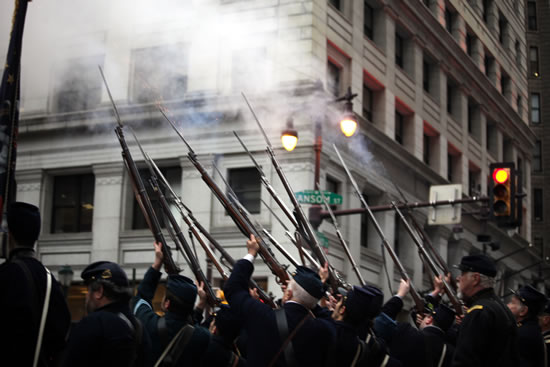On April 16, 2011, a series of groups put together the Civil War Philadelphia Sesquicentennial Parade and Review. The event was meant to coincide with the 150th anniversary of Philadelphia’s answering of President Lincoln’s call for volunteers to put down the rebellion in the South after the surrender of Fort Sumter. There were marching bands, a slew of re-enactors, people dressed as famous figures, and Mayor Michael Nutter.
The event was not entirely historically accurate in its presentation, but that was by design. The goal was to honor all troops who fought for Pennsylvania, not just the volunteers from April 1861. The Philadelphia Inquirer pointed out that the presence of United States Colored Troops was several years too soon in the war. However, I think the event succeeded in bringing recognition and awareness to the Civil War and Philadelphia’s part in it.
Starting from the Constitutional Center, the parade marched south, headed west on Chestnut Street, headed south on Broad Street, and stopped in front of the Union League building for some speeches and a review of the re-enactors.
These women led the parade.

This man played a great Frederick Douglass.

Philadelphia Mayor Michael Nutter

Federal cavalry re-enactors marching west on Chestnut Street followed by modern-day United States Marines


Another shot of Federal cavalry heading south on Broad Street

Pennsylvania and the United States Colored Troops have a strong history. Check out the re-enactment of the USCT Grand Review in Pennsylvania from November 6, 2010.

Re-enactors of the 1st Pennsylvania Infantry Reserve Corps marching west on Chestnut Street
Infantry in front of the Union League building during the singing of the National Anthem.
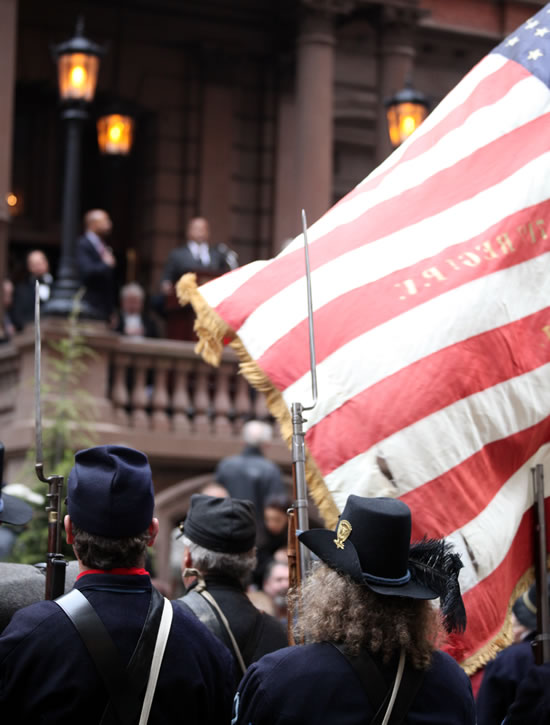
Mayor Michael Nutter delivered the opening speech (video and transcript).
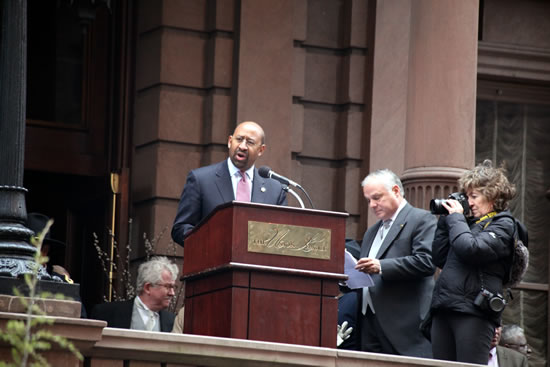
The infantry re-enactors gave a coordinated cheer for the mayor after his speech.
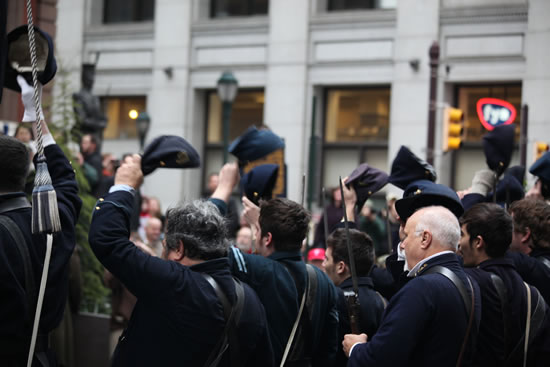
The faux Frederick Douglass delivers a passionate speech while Lincoln watches in the background. Both of the actors playing Douglass and Abraham Lincoln depicted the iconoclastic versions of these figures. During this time in 1861, Douglass was a harsh critic of Lincoln and many of the politicians of the North. Douglass believed that slavery was the root cause of the war and until Lincoln adopted that belief, Douglass lamblasted the president via speeches and articles until the announcement of the Emancipation in September 1862. However, for this event, the actor was very kind to Lincoln.
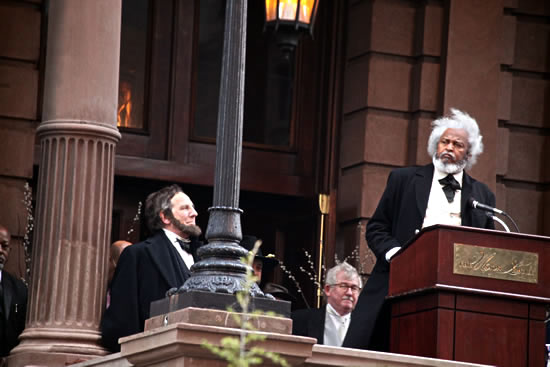
The faux Lincoln made a statement along the lines that he only wanted to win the war on the grounds of liberty and freedom. The speaker went so far to state that he would rather be assassinated than to achieve victory on any other grounds. However, this was far from Lincoln’s belief in April 1861, as he strove to convince slave states still within in the Union that he did not wish to abolish slavery.
Update: Laura Blanchard pointed out that these statements came from Lincoln on February 22, 1861 in a speech delivered in front of Independence Hall.

Anthony Waskie, professor of German and Slavic languages at Temple University, portrayed General George Meade and emphasized that the event was geared toward honoring all Pennsylvanians who served in the Civil War.

The infantry re-enctors shot off an honor volley after the speeches concluded.
